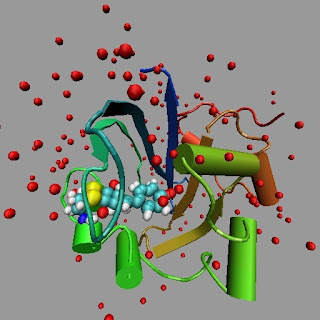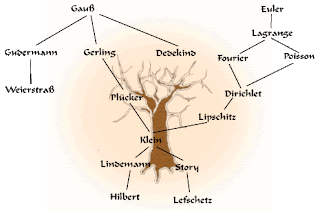In a 2007 Nature paper Engel et al. reported the data below showing the amplitude of an optical signal versus time.
The lower curve is the Fourier transform [using a new numerical method they developed explicitly for this paper] of the upper data.
They interpreted this data as evidence for quantum coherence between the excited states of different chromophores in a photosynthetic protein, since an oscillatory signal is a signature of quantum interference (Rabi oscillations). Engel et al. went on to claim that this coherence enabled the biomolecule to function in a highly efficient manner because:
…the system is essentially performing a single quantum computation, sensing many states simultaneously and selecting the correct answer, as indicated by the efficiency of the energy transfer. In the presence of quantum coherence transfer, such an operation is analogous to Grover's algorithm, …such a scheme can provide efficiency beyond that of a classical search algorithm.This Nature paper greatly excited many in the quantum information community and has led to a host of theoretical papers about "quantum biology". The paper has already been cited hundreds of times.
But is this enthusiasm and hyperactivity justified? Given the noisy data and the absence of any concrete measurements of entanglement (e.g., violation of Bell inequalities) are the conclusions and claims really justified? I do not think so, as I have expressed several times in previous blog posts.
There is an interesting new preprint A critical view on transport and entanglement in models of photosynthesis by Tiersch, Popescu, and Briegel which has the abstract:
Quantum effects in biological light-harvesting molecules, such as quantum coherence of excitonic states and entanglement have recently gained much attention. We observe a certain discrepancy between the original experimental work and several theoretical treatments of coherent excitation transport in light-harvesting molecules. Contrary to what is generally stated, we argue that entanglement in such molecules is generally not equivalent to the presence of coherence but mostly introduced by initial assumptions underlying the models, and that entanglement, as opposite to coherence, seems to play no role in the transport efficiency.
























